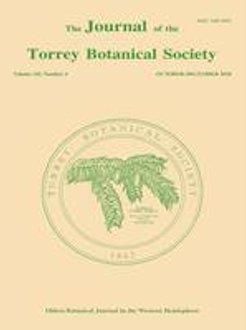Many studies have examined variation in nuclear DNA content across environmental gradients. However, these studies have often produced conflicting results. We speculated that the conflicting phenomenon resulted from insufficient sampling of the taxa and limitations in the geographical range. To clarify whether the relationships between nuclear DNA content and environmental gradients are universally nonlinear across a wide geographical range, we chose 3,290 herbaceous angiosperm species, which have both nuclear DNA values in the Angiosperm DNA C-values database and geographical distribution information in the Global Biodiversity Information Facility (GBIF) database. Then we selected 10 global longitudinal transects each with a span of 15°, and evenly divided each transect (from 82.5°N to 82.5°S) into 22 blocks. We obtained geographical records (presence or absence) of these 3,290 species together with 14 bioclimatic factors within these blocks, and calculated the average DNA 1C-values and genome sizes of the species in each block. By using polynomial functions, we analyzed the correlation of nuclear DNA values with latitude. By using the Gaussian model, we further analyzed the correlation of nuclear DNA values with the 14 bioclimatic factors. Finally, we also performed quantile regression analyses to elucidate the differences in geographical distribution pattern among groups with nuclear DNA values of different sizes. We found that species in equatorial areas had the smallest mean nuclear DNA values, the values increased with latitude for both the northern and southern hemispheres following nonlinear functions. We found that nuclear DNA contents decreased with increasing latitude in the Arctic. The change of nuclear DNA content with latitude was weaker in the species groups with smaller nuclear DNA content than those with a larger nuclear DNA content. Nonlinear relationships (following Gaussian models) also existed between nuclear DNA values and the 14 bioclimatic factors, such as annual precipitation and mean temperature. Therefore, the relationships of nuclear DNA content with either latitude or the 14 bioclimatic factors covarying with latitude are universally nonlinear across a global geographical gradient. Nuclear DNA contents are of ecological significance for angiosperms. There exist obvious differences in the geographical distribution patterns among species groups with nuclear DNA values of different sizes, with a selective advantage for species with small nuclear DNA content in extreme environments.
How to translate text using browser tools
1 October 2018
Nuclear DNA content variation of herbaceous angiosperm species on 10 global latitudinal transects,
Jing Yu,
Dandan Li,
Yuxia Lou,
Shuiliang Guo
ACCESS THE FULL ARTICLE
bioclimatic factors
global latitudinal gradient
herbaceous angiosperm species
nuclear DNA content
quantile regression





